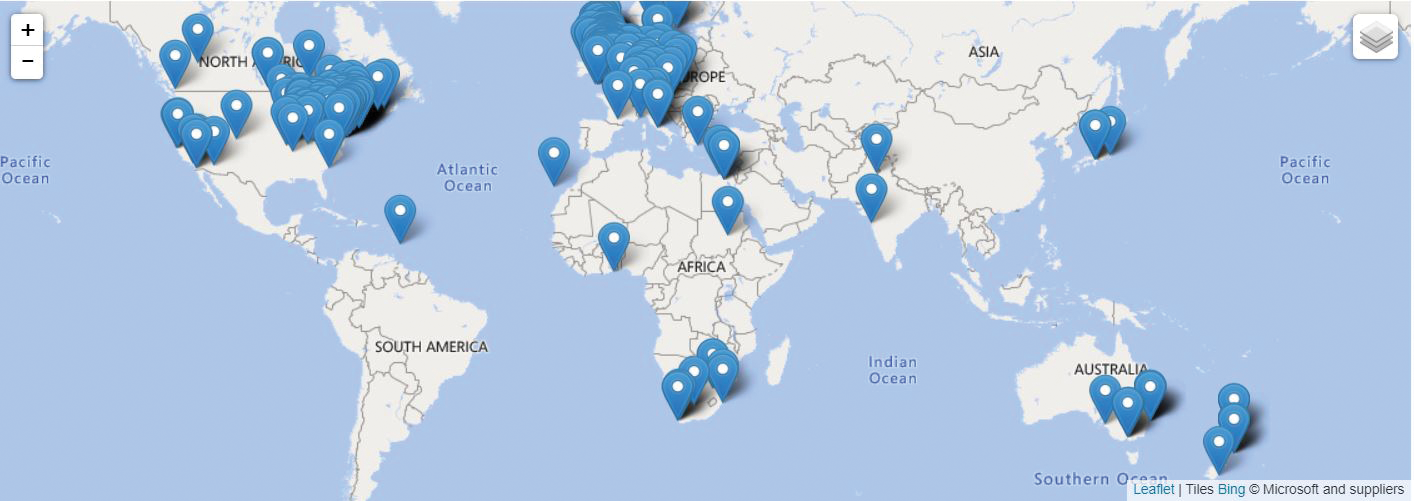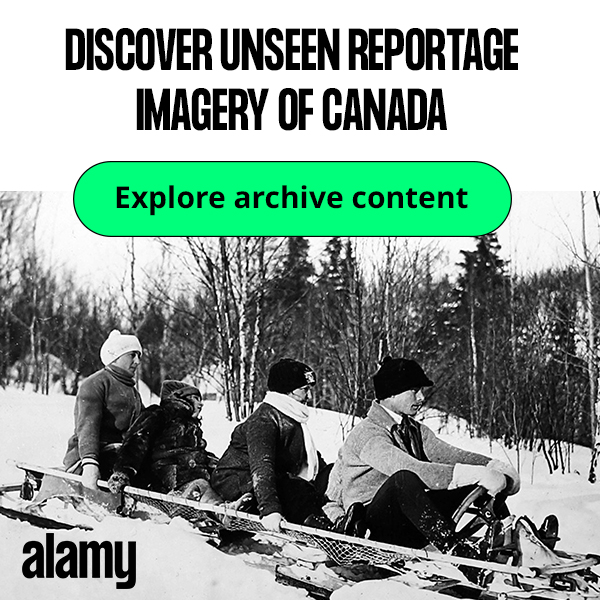Map of “Artefacts of Excavation” pinpointing locations of museums with Egyptian heritage objects.
Egypt’s dispersed heritage; repatriation against borders
Mohamed Serageldin
Internationally, there has been increased attention given to calls for repatriation. In “Moved to Action,” we are told, “Don’t Wait, Repatriate!” while concerted efforts and calls to action are being made to command the return of cultural heritage from the collections of former European colonial empires.
Museums have played a key role in ideologically justifying colonization, serving as sites through which archaeology and adjacent fields would exhibit colonial administrations’ self-proclaimed status as patrons of the colonial subjects’ artefacts and, more broadly, their heritage.
One such adjacent field, Egyptology, began in the late 18th century with Napoleon Bonaparte’s invasion of Egypt. Throughout the 19th century, Egypt became more accessible to European scholars and plunderers (sometimes one and the same), and an untold and uncountable number of artefacts were removed from Egypt.
This plundering has had ongoing repercussions, a key one being the divorcing of ancient Egyptian history from the history of modern Egyptians.
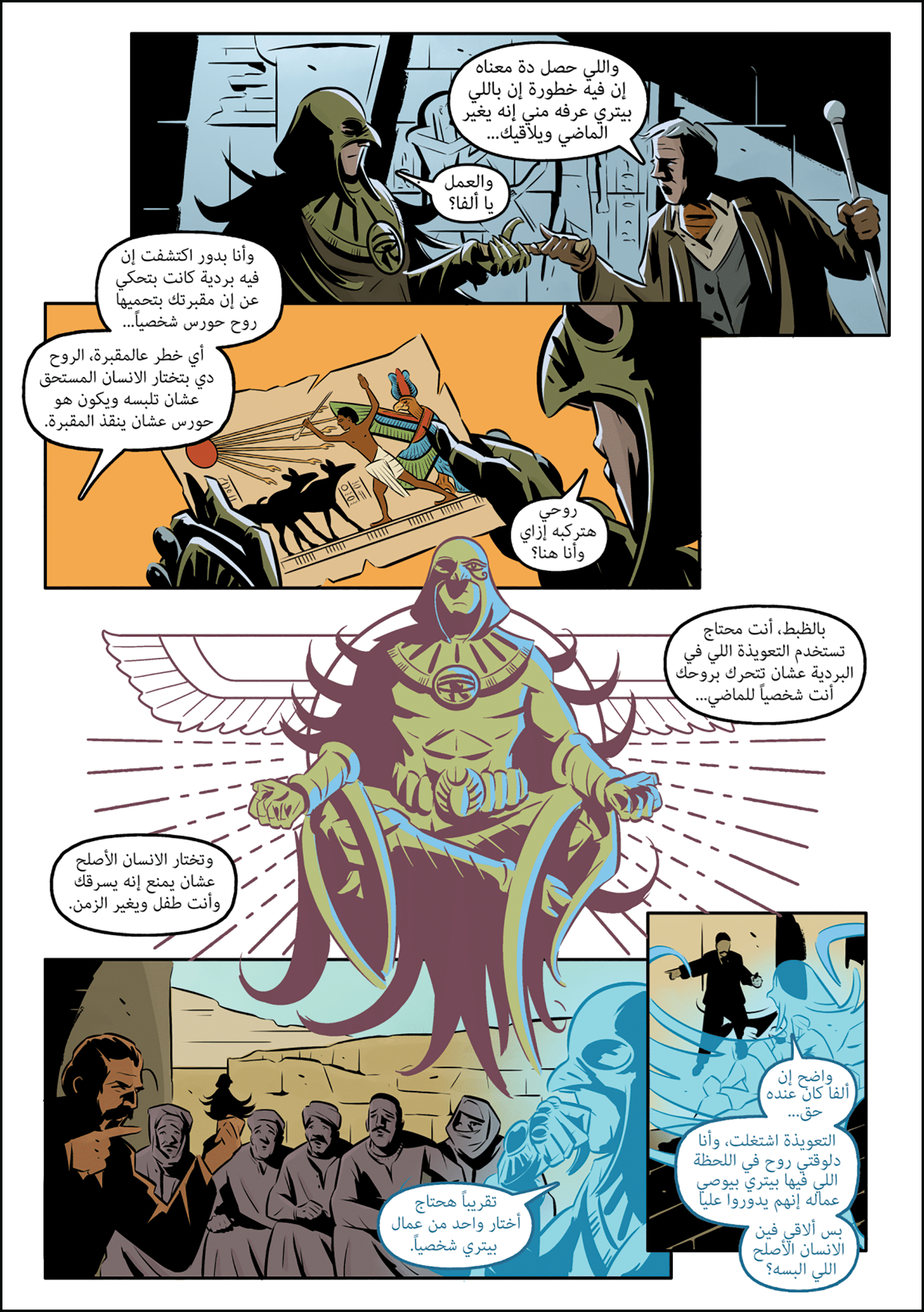
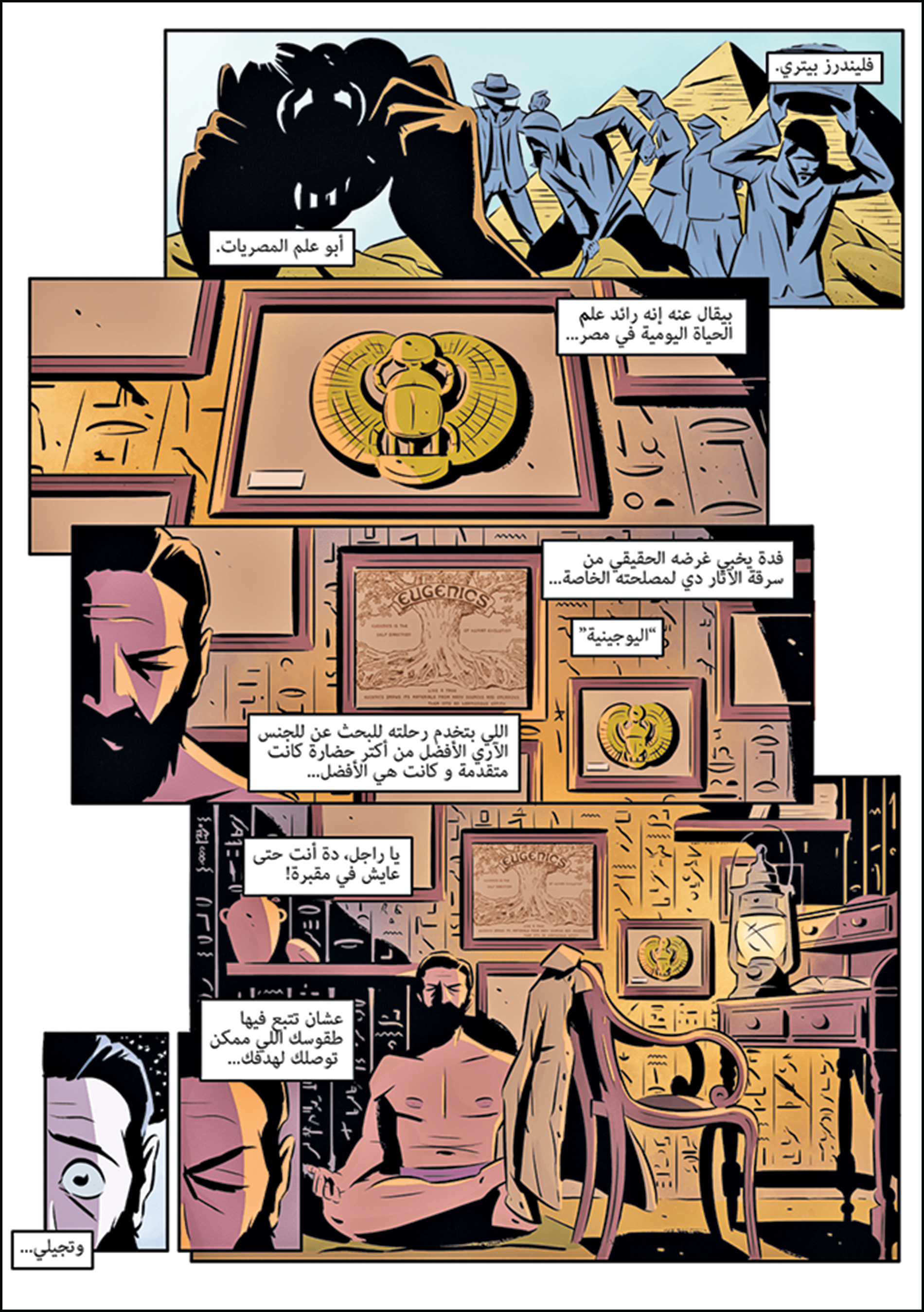
Excerpts from the comic series El ‘osba (The League)’s issue titled “The Search for Horus-man” by John Maher and Ahmed Raafat.
When they worked on the project “Artefacts of Excavation,” Drs. Alice Stevenson and Heba Abd el Gawad, from the Institute of Archaeology at University College London, digitally mapped objects from British excavations currently housed by 320 institutions in 26 countries. Most of these artefacts can be traced to excavations done by British Egyptologist Flinders Petrie. Termed the “father of Egyptology,” Petrie conducted tens of archaeological excavations all over Egypt and Palestine, from which thousands of Egypt’s artefacts were expatriated using the “partage” policy. Co-devised by Petrie himself in 1883, partage allowed foreign archaeologists to freely take and export heritage items deemed by British-occupied Egypt’s museum authorities as “duplicate” items after taking first pick.
As in most communities that have been separated from the physical manifestations of their cultural heritage, there is a personal loss and subsequent ongoing response. “Egypt’s dispersed heritage: Multi-directional storytelling through comic art” was designed as a follow-up project to “Artefacts of Excavation,” to document modern Egyptians’ feelings and historical grievances on the dispersion of their heritage and the impact it has had on their livelihoods.
As part of the project, they translated all the data of “Artefacts of Excavation” into Egyptian Arabic and commissioned Egyptian graphic novelists from Egypt to create a series of online comics that confront contentious heritage issues: the display of mummified human remains, eugenics, looting and destruction. These efforts are guided by what the researchers call their “people-centric approach,” an approach that prioritizes sourcing information from Indigenous communities and actively engaging members of these communities in curatorial practice, as opposed to holding priority for academic or state-issued expertise and narratives.
Dr. Abd el Gawad ascribes the source of this approach to the “feeling that the connection Egyptians tend to have with ancient Egypt is full of self-defeat, as though we are not good enough to safeguard our own heritage.” She does not shy away from tracing this attitude’s roots to Egyptology’s having been a field that was historically gate-kept from native Egyptians.
“Ancient Egypt is usually perceived as uncontested or unclaimed; it’s an orphan culture. We [Egyptians] have no right to claim it. We’re not perceived as a source community or as Indigenous,” she cites.
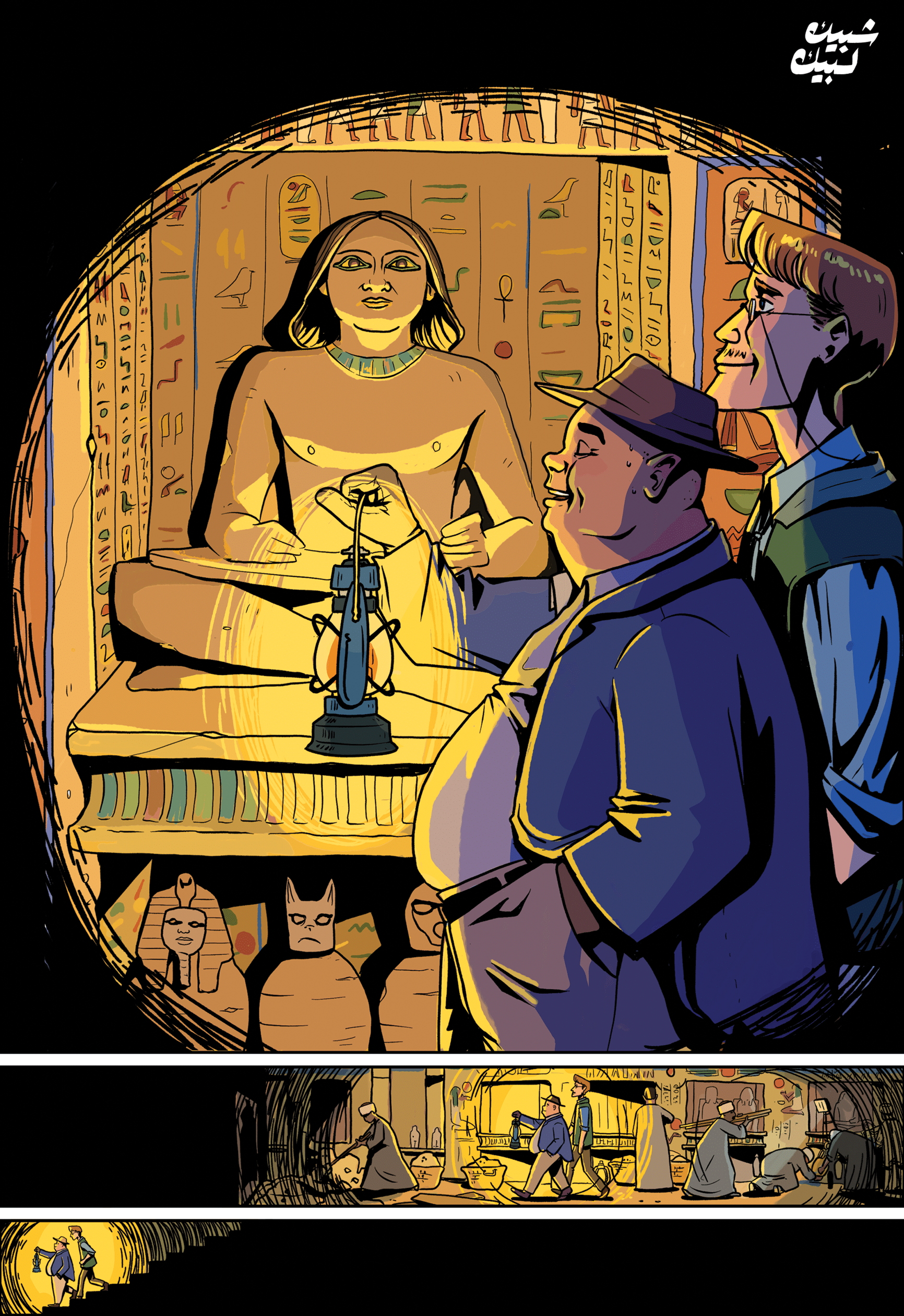
Excerpt from the comic series Shubeik Lobeik by Deena Mohamed.
The attitude Dr. Abd el Gawad described is perhaps best reflected in the writings of staunch Egyptology enthusiast Sir Evelyn Baring, Lord Cromer, the first High Commissioner of Egypt after its occupation by the British in 1882 — effectively the man responsible for securing and legitimizing British colonial occupation of Egypt. In Elliot Colla’s Conflicted Antiquities: Egyptology, Egyptomania, Egyptian Modernity, Lord Cromer is cited as “often invoking comparisons between the governance of ancient and modern Egypt in arguing for British rule over Egypt” implying that “Egypt does not know how to care for its national patrimony, indeed, modern Egyptians threaten this patrimony; [and that] with outside intervention, ancient Egypt could be protected from modern Egyptians; modern Egypt could be governed wisely and have its greatness restored to it.”
Though any British influence on Egyptian governance has de facto ended in 1956 with the nationalization of the Suez Canal, attention to the colonial narratives on Egyptian artefacts in Western museums has yet to be radically contested by the Egyptian authorities beyond the infrequent, though lately increasing, demands that dispersed items be repatriated, most recently the Rosetta Stone. Though some repatriation efforts have been made in recent years, such as New York’s Metropolitan Museum of Art’s return of a handful of its 26,000 Egyptian artefacts to Egypt in 2022, these efforts have been minor. It should be noted that foundational parts of the Met’s Egyptian collection were acquired using the partage policy.
Tourism, and subsequently heritage, is one of Egypt’s primary sources of national income, which drives the necessity to replicate narratives of a disconnected “Ancient Egypt” seen throughout the West.
Though the name “Ministry of Tourism and Antiquities” arguably gives it away, more marked manifestations of this situation include the state’s construction of the Grand Egyptian Museum and the Art D’Égypte exhibit. The former, set to open in November of this year, is a US $1-billion investment, 75 per cent of which is through debts to Japan, in a country with $156 billion worth of foreign debt and a 27.9 per cent poverty rate. The exhibit, which shares its name with a private firm with government connections and extensive corporate partnerships, showcases abstract, formalistic and design-driven (mostly foreign) art at Egypt’s heritage sites, linking the past to the creative present.
In short, the problem is twofold: on the one hand, the state wants to profit from Egyptian heritage, alienating modern Egyptians in the process, and on the other, Egyptology and Western museums continue to claim ancient Egyptian history as their own, perpetuating a dangerous distinction between the great ancients and the wretched moderns.
How are Canadian museums contributing to this ongoing issue? Throughout our own collections and exhibits, “Artefacts of Excavation” identified thousands of Egyptian artefacts extracted through British excavations, most of which are concentrated in five of Canada’s biggest museums. Most of these collections are also traced to Petrie’s excavations. Though our museum sector continues to take steps away from colonial frameworks, there remains limited consideration for the implications of our efforts for reconciliation beyond Canadian borders.
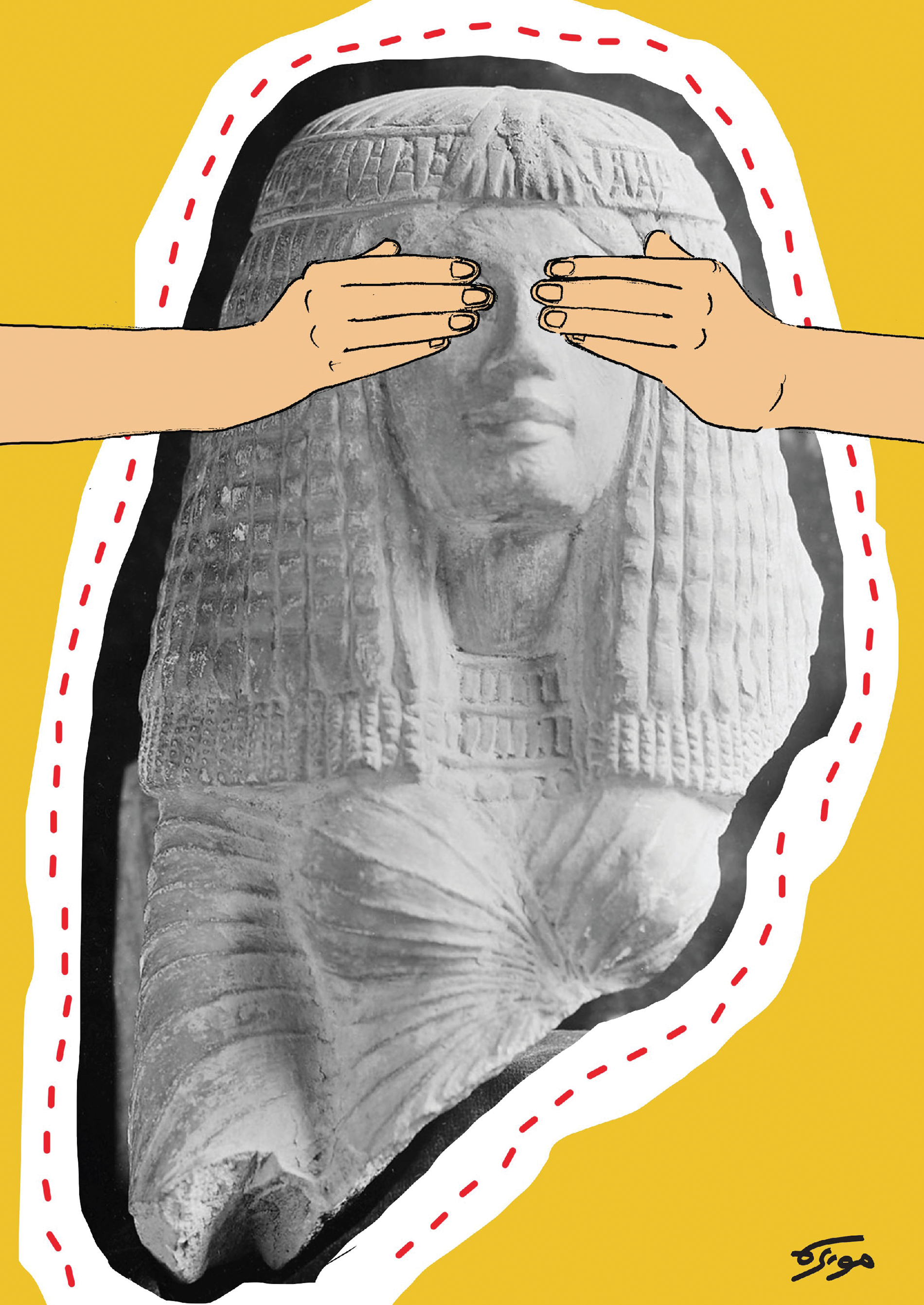
Illustration by Moira Adel for “Egypt’s dispersed heritage” incorporating an unearthed archive photograph from “Artefacts of Excavation” of a statue of an unnamed Egyptian queen found in Deir El Bahari, Egypt.
Most Egyptian heritage items in Canada are in storage or used for academic purposes only. Otherwise, Egyptian items on display in Canadian museums are normally exhibited drawing from salient Egyptological narratives that reproduce a narrative of greatness.
Ironically, some of the inspiration comes from within. Dr. Stevenson notes that their approach in “Egypt’s dispersed heritage” was in part influenced by the community-oriented “Haida Gwaii efforts for repatriation. They made me think about who this material belongs to and how did it got here.” Rethinking ownership not just of heritage objects but of the narratives constructed around them as well underlies the subversiveness of the researchers’ approach to curatorial practice before, during and after repatriation.
In their efforts for repatriation, museums should consider this shared history of colonial violence among Indigenous Peoples globally. The “people-centric approach” offers a model that forces museums to centre Indigenous knowledge and communal engagement in the process of repatriation, as well as in curatorial practice more broadly. As repatriation counteracts the geographic displacement of Indigenous heritage objects, taking on a people-centric approach could similarly counteract the discursive displacement of Indigenous communities’ heritages. This model could expand the positive implications of repatriation beyond the limitations that national borders impose on universal solidarity against human suffering — including the suffering caused by the forced displacement of heritage. M
I would like to thank Drs. Heba Abd el Gawad and Alice Stevenson for having taken the time to discuss their work with me, better informing my understanding of the topics addressed in this article.
Mohamed Serageldin is a communications officer at the Canadian Museums Association. Passionate about all things cultural, Mohamed spends their free time being the associate editor of The Vermin, a critical literary magazine.
Further reading
|
